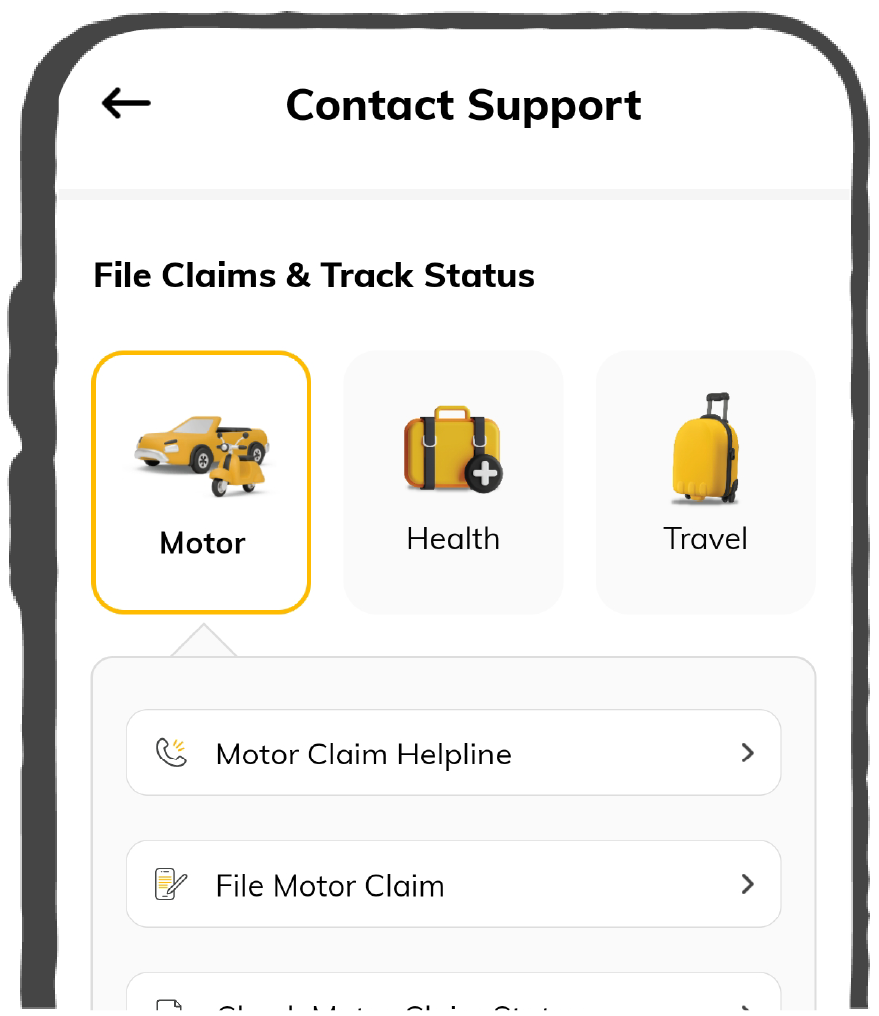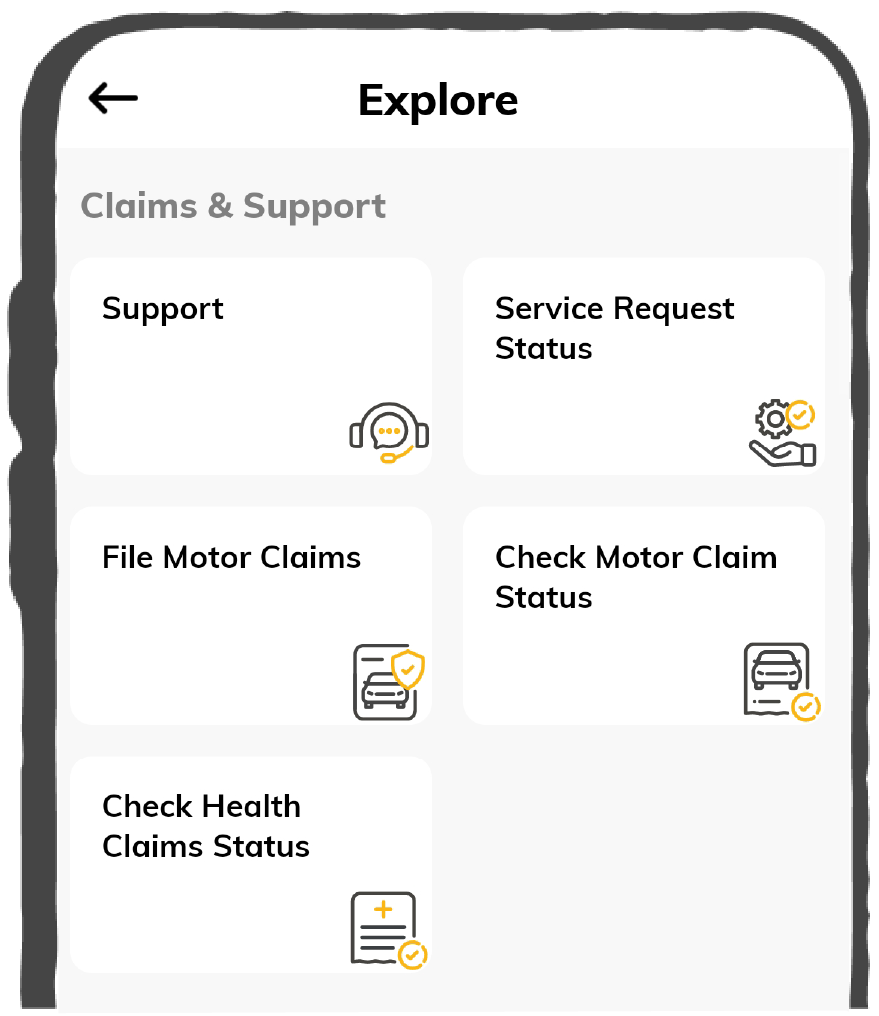Quick Claim Process

Affordable Premium

Accessibility Options

General

General Products
Simple & Transparent! Policies that match all your insurance needs.


37K+ Reviews
7K+ Reviews
Scan to download

Life

Life Products
Digit Life is here! To help you save & secure your loved ones' future in the most simplified way.


37K+ Reviews
7K+ Reviews
Scan to download

Claims
Claims
We'll be there! Whenever and however you'll need us.


37K+ Reviews
7K+ Reviews
Scan to download

Resources
Resources
All the more reasons to feel the Digit simplicity in your life!
 Tools & Calculators
Tools & Calculators


37K+ Reviews
7K+ Reviews
Scan to download

37K+ Reviews
7K+ Reviews
Select Preferred Language
Our WhatsApp number cannot be used for calls. This is a chat only number.

Enter your Mobile Number to get Download Link on WhatsApp.
You can also Scan this QR Code and Download the App.
Quick Claim Process

Affordable Premium


Companies use their business equity to fund their growth and expansion. To source these funds, owners sell a part of the company to various investors which represents equity. Read on to know what equity means in business, its types and how to calculate it.
In simple terms, you can calculate business equity as the difference between the total assets and total liabilities of the company. One can get an idea about the valuation of a company by looking at the equity.
Equity value is recorded in the company's balance sheet. A quick glance at the equity value can give prospective and current investors a general view of a company's financial health. If the company has a negative equity value, i.e., total liabilities exceed total assets, it indicates balance sheet bankruptcy or insolvency.
Now, as you are familiar with the definition of business equity, it’s time to move to types of equity and other aspects.
There are primarily two types of equities in a company which are as follows:
A stockholder’s equity is the total ownership of various investors of the company in the form of shares or stocks. It shows the amount that is required to be paid to the stockholders at the time of liquidation.
A stockholder’s equity includes retained earnings apart from regular dividends. Retained earnings refer to the part of profit which a company saves rather than distributing it. A stockholder’s equity is more common in case of corporations.
An owner's equity refers to the amount invested by the owner of the company. It is applicable in case of sole proprietorships or partnerships, in which there is a limited number of owners who have absolute control over the business.
This equity shows the capital available in a sole proprietorship/partnership. One can also use them to measure a company's worth.
Here is the formula for calculating business equity:
Business Equity = Value of Total Assets – Value of Total Liabilities
You can find information about a company’s assets as well as liabilities on the balance sheet of the company.
As per the formula mentioned above, business equity can be calculated in the following way:
|
Value of Total Assets (A) |
Value of Total Liabilities (B) |
Business/Shareholders’ Equity (A-B) |
|
Rs. 50,00,000 |
Rs. 42,00,000 |
Rs. 8,00,000 |
Here are some things that businesses should consider before getting financing against business equity:
Before issuing its equity to new investors, a company should take their fund requirements into consideration. The size of the fund requirement will help a company decide the quantum of shares that need to be issued. It will also decide whether a company should target institutional investors or retail investors.
The existing business structure of the company is another factor that companies should take into account while issuing shares to the public. The promoter or directors may have to dilute their equity and issue new shares to get funding from investors.
The accessibility of equity markets is another important factor when giving up equity. Large companies can offer equity to the public in huge amounts to receive considerable investment for expansion. However, small companies may not meet the minimum requirements to enter equity markets.
A company may consider their long-term goals before giving up equity to new investors. Issuing equity shares can be a viable alternative if the long-term objective of the company is to go public or list their shares on stock exchanges.
Potential investors always keep an eye on the equity value of a company while deciding whether to go for an investment or not. This detailed guide about the meaning of business equity, its calculation and types will provide meaningful insights to investors about the nitty gritty of business equities
Preferred equity shares represent an ownership stake in the company. However, unlike common shares, they come with no voting rights. Additionally, preference equity shareholders are given preference in case of distribution of dividends. They have the first right of claim over a company's assets
Preferred equity shares represent an ownership stake in the company. However, unlike common shares, they come with no voting rights. Additionally, preference equity shareholders are given preference in case of distribution of dividends. They have the first right of claim over a company's assets
Private equity is composed of funds invested into companies that do not trade publicly. In simpler words, they are the shares of a company that are not available for selling in public stock exchanges.
Private equity is composed of funds invested into companies that do not trade publicly. In simpler words, they are the shares of a company that are not available for selling in public stock exchanges.
